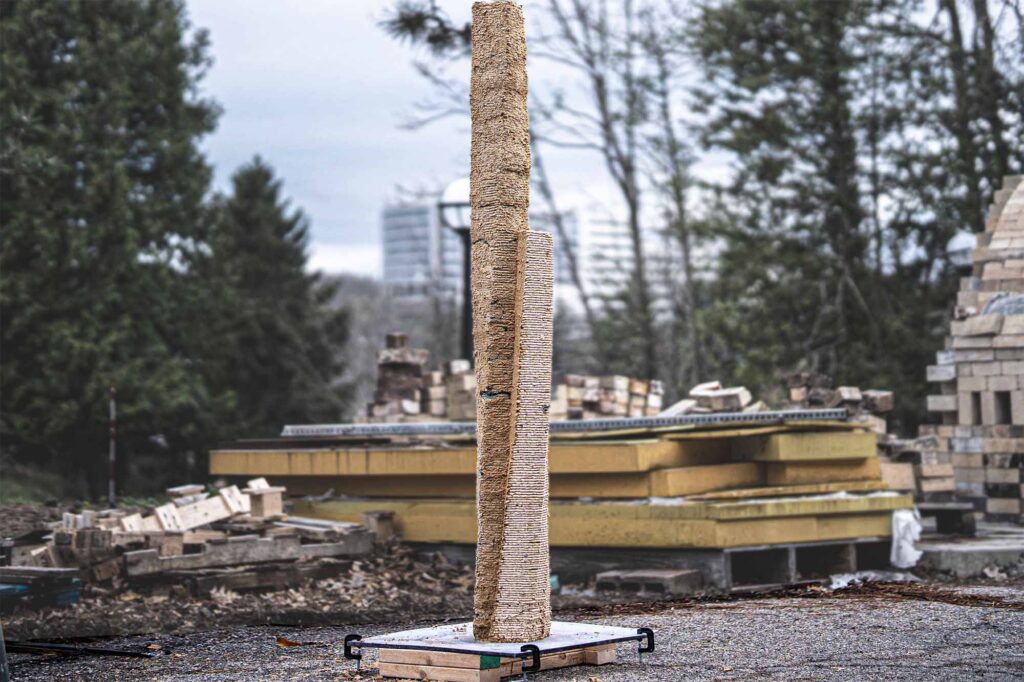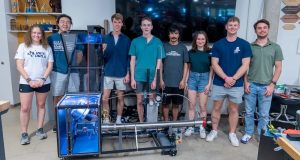A research team at the University of Michigan has developed a biodegradable and recyclable alternative material for concrete formwork. The basis for this is a waste product: sawdust. From this, 3D printing is used to produce a reusable formwork that can be ground up and reprocessed after concreting. Until now, wooden formwork has mostly been disposed of, wasting resources. The innovation thus aims to make the construction industry more sustainable and reduce waste.
“We have made a recyclable, all natural biomaterial which is made out of sawdust. Other sawdust-based solutions are using other petroleum-based polymers—we use biopolymers which are completely decomposable,” said Muhammad Dayyem Khan, researcher at the DART laboratory. “And the biggest thing is it’s very easy to recycle and reuse.”
Led by Mania Aghaei Meibodi, the team is combining robotic 3D printing technology of the wood-based material with an innovative concrete casting process to create waste-free concrete structures. The 3D-printed wood formwork gives the concrete its shape, while the fresh concrete stabilizes the wood and prevents deformation. After the concrete has cured, the formwork can be removed and fully recycled.
“When the sawdust decomposes, it is producing fatty acids, lignin, which causes toxicity in water. And once it starts contaminating water, it has its effects on smaller wildlife, microbes and a broad range of organisms. And with sawdust being extremely flammable, its potential contribution to wildfires is very high,” Khan said.
The new technology will make a significant contribution to waste and pollutant production in the concrete industry, where formwork traditionally accounts for 40% of concrete construction costs.
“The amount of sawdust that is being produced out there—it is a huge chunk of material that is just being dumped or burned,” Khan said. “So rather than burning it up and generating more CO2 emissions, it is so much better that we make it into a material that is actually capable of being used again and again.”
This approach points to more sustainable construction practices that reduce waste, pollution and resource consumption in the concrete industry. The project thus symbolizes a significant step towards more environmentally friendly and efficient concrete construction practices.
Subscribe to our Newsletter
3DPResso is a weekly newsletter that links to the most exciting global stories from the 3D printing and additive manufacturing industry.




























